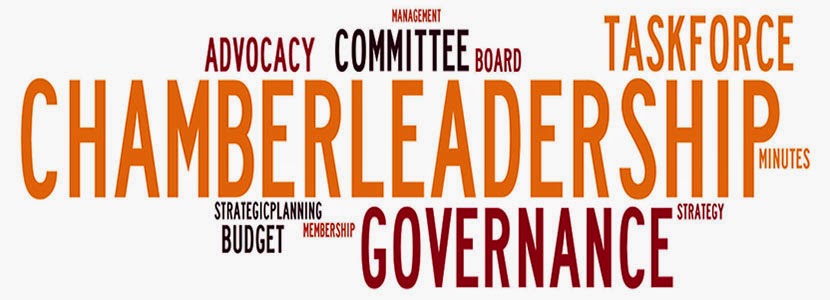We need to ask this question more often.
It doesn’t have to be at the end of each year. It could be at your next board meeting.
Remember, we can't be all things to all people.
Do your chamber a favor, go back five years and right write down all the new programs or initiatives you’ve started on the left side of a sheet of paper.
Now write down all the things you’ve stop doing on the right side of that same sheet of paper.
I’ll bet that the left side has a lot more items than the left. Why? Like our peers across the country they’ve had five new chairmen each with their own special project that they support.
In fact, we’re doing more with less. We’re on that conveyer belt of life. Doing the same thing over and over because that’s the way we’ve always done it.
I challenge you to add more items to the right side of the sheet. It may allow your chamber to appropriate the proper resources to the programs you decide to keep and they may become more successful.
Not only should you review what the chamber should stop doing but what are you personally going to stop doing to free up your time and burnout?
I fall in the same trap you do. I feel I must read every email, article or book for work. Well, you don’t need to read them all, just the important ones.
Your homework assignment, identify which important thing you need to focus on and put the rest in the circular file.
It’s liberating!
Keys to Holding Effective Board/Committee Meetings
Board meetings, committee meetings or task force meetings, it doesn’t matter, they should all be conducted in the same manner.
All meetings should start on time. They should be done at a venue that is conducive to conducting a business meeting (i.e., AV, room set-up, etc.) and don’t forget the refreshments.
The key to a well-run meeting starts with a well thought out agenda. Your agenda should be a product created by the board chair and the chief staff executive.
The agenda should have a timeline attached to each item, it should include a consent calendar and clearly identify if there are any action items that need to be addressed.
Remember, you don’t have to discuss every item at every board meeting. Here’s a sample agenda to get you started and should be completed in one hour:
Please note that the committee reports under the consent calendar could be a full agenda item at any meeting.
It all depends on the time of year and what those standing committees are working on and whether there is a need for board approval (i.e., taking a position on a legislative matter, endorsing a candidate, etc.).
It should also be noted that any item on the consent calendar can be pulled off and discussed at the full board meeting.
Having said that, the more items you can put under the consent agenda, the smoother your board meetings will go. And, stick to the times you’ve attached to each item.
Good luck with your next board meeting!
All meetings should start on time. They should be done at a venue that is conducive to conducting a business meeting (i.e., AV, room set-up, etc.) and don’t forget the refreshments.
The key to a well-run meeting starts with a well thought out agenda. Your agenda should be a product created by the board chair and the chief staff executive.
The agenda should have a timeline attached to each item, it should include a consent calendar and clearly identify if there are any action items that need to be addressed.
Remember, you don’t have to discuss every item at every board meeting. Here’s a sample agenda to get you started and should be completed in one hour:
- Introduction/Roll Call (5 minutes)
- Approval of the minutes (5 minutes)
- Chairman’s Report (5 minutes)
- Mega issue discussion (40 minutes)
- Consent Calendar (approval of the consent calendar takes no time)
- Finance Committee Report
- Government Relations Committee Report
- Education Committee Report
- Leadership Committee Report
- Membership Committee Report
- Foundation Report
- Other (5 minutes)
- Adjournment (date of the next meeting)
Please note that the committee reports under the consent calendar could be a full agenda item at any meeting.
It all depends on the time of year and what those standing committees are working on and whether there is a need for board approval (i.e., taking a position on a legislative matter, endorsing a candidate, etc.).
It should also be noted that any item on the consent calendar can be pulled off and discussed at the full board meeting.
Having said that, the more items you can put under the consent agenda, the smoother your board meetings will go. And, stick to the times you’ve attached to each item.
Good luck with your next board meeting!
For a comprehensive overview of a board chair and
board member best practices packet by the nonprofit alliance at the Kellogg
Community College go HERE.
Subscribe to:
Posts (Atom)


